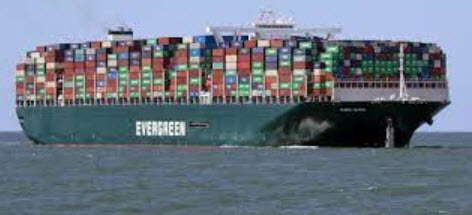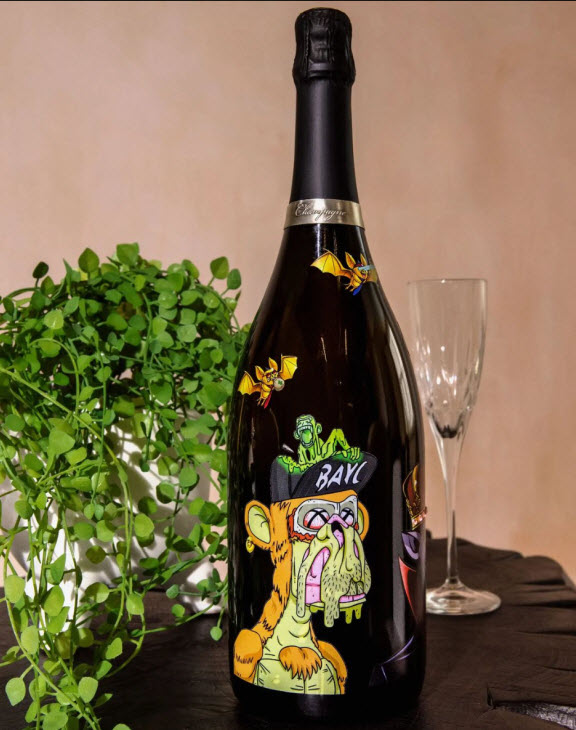CHAMPAGNE BULLETIN JULY 2022
In this month’s Champagne Bulletin
- A good time to be in the Champagne business - Champagne market value to boom in coming decade
- But there are some headwinds too – input costs are rising too
- The most expensive bottle of champagne ever sold
- Harvest news and reserves
You may remember that just a few months ago the Comité Champagne announced that the total value of champagne shipped in 2021 reached the record level of 5.7 billion euros or about 7 billion USD
 Coming after two pretty dismal years in 2019 and 2020, the news was greeted with much celebration and confidence that Champagne had turned the corner and was once again on the path towards buoyant sales and decent profits, but even the most bullish champagne makers would probably be surprised by a recent study that forecasts that the value of the Champagne market will keep on powering ahead in the next 10 years.
Coming after two pretty dismal years in 2019 and 2020, the news was greeted with much celebration and confidence that Champagne had turned the corner and was once again on the path towards buoyant sales and decent profits, but even the most bullish champagne makers would probably be surprised by a recent study that forecasts that the value of the Champagne market will keep on powering ahead in the next 10 years.
A new study lead by Future Market Insights, an economic analysis group in Great Britain, believes that by 2032 the value of champagne shipments will have surged upwards to over 11 billion dollars thanks to an annualised growth rate of 5.08%
What’s driving the growth?
There seem to be a number of trends all converging to the benefit of champagne
- Although I wouldn’t go so far as to say that drinking Champagne has become an everyday event, it does seem that the Champenois are succeeding in finding the right balance between two potentially conflicting objectives: making champagne the first choice of an ever-growing number of consumers whilst still retaining the exclusive aura of luxury and that has always been the hallmark of Champagne
- More and more people see champagne as a drink to enjoy on informal occasions when they just want to have fun instead of just a drink for rare and special occasions.
- At the same time, as more consumers enter the world of champagne, they are discovering that not all champagnes are the same and they are eager to try something new such as rosé champagne, vintage champagne or low-dosage champagne all of which command a premium compared to non-vintage champagne.
- This means that the average price per bottle is moving steadily upwards as consumers are less likely to choose a ‘bargain basement’ ‘brand.
- Champagne drinking has had a boost as bars, clubs and restaurants are seeing business return to something approaching normal.
- Decades of investment in developing new markets is beginning to bear fruit. Although the USA is by far the largest market for Champagne, accounting for just under 25% of total sales value, other markets in Europe, Asia and elsewhere are growing fast.
Still some issues ahead
Those of you who are already working with me on creating your own champagne brand will already know that the lead times are getting longer.
Sourcing the bottles of champagne has become more challenging over the past six months as dwindling stocks at several wine makers cannot be replaced following two consecutive small harvests. (but see below for more on this)
However, it’s the supply and production of the packaging that are really causing delays. Whether it’s foils, corks, labels or boxes, everything seems to be in short supply and costing more than a year ago.
 Another significant issue is transport, particularly sea freight
Another significant issue is transport, particularly sea freight
As explained in a recent article in Drinks Business
From next year, a new law from the International Maritime Organisation (IMO) will require all ships to calculate their annual carbon intensity based on a vessel’s emissions for the cargo it carries. Shipping companies will be required to demonstrate that their emissions are progressively coming down.
The option is there to retrofit ships with devices to lower emissions but by far the easiest and cheapest way of meeting the new requirements is to simply slow down sailing. For companies with older fleets, this choice will be particularly favourable.
Given that a 10% drop in cruising speed can slash fuel usage by almost 30%, many shipping bosses are expected to put the proverbial brakes on as they sail into 2023.
As any Champagne maker will tell you, now more than ever ‘Patience is a virtue’
A new record price at auction
 Image from the Instagram account of Champagne Avenue Foch
Image from the Instagram account of Champagne Avenue Foch
Last month saw yet another Champagne record broken – this time for the world’s most expensive bottle of Champagne : 2.5 million dollars. That’s a large chunk of money, although to be fair, it was a magnum.
You might well ask what made this bottle worth so much
Well, it has very little to do with the champagne inside the bottle and everything to do with the NFTs associated with the sale.
The bottle was the brainchild of Shammi Shinh, a London-based businessman, self-styled champagne connoisseur and, more importantly, an authority on NFTs. It was a meeting between him and the artist Mig that lead to the creation of this record-breaking bottle of champagne.
Printed on the bottle are 5 NFTs designed by Mig who is the creator of the NFT collections The Bored Ape Yacht Club and The Sneaky Vampire Syndicate NFT and it is these unique and rare NFTs on the bottle that warranted the huge price tag.
The champagne itself comes from a small producer in the village of Chamery by the name of Allouchery-Deguerne. It’s a blend of Pinot Noir, Chardonnay and Meunier from Premier Cru vineyards and it’s a vintage champagne from the 2017 harvest which means the Champagne is not very old for a vintage cuvée
Since Allouchery-Deguerne’s regular non- vintage cuvée sells for around just €15 a bottle, it would seem that the value of this exceptional bottle lies almost entirely in the NFTs
A great harvest in prospect
 With demand for Champagne unexpectedly booming since mid-2021, stocks of bottles in cellars across the region are disappearing rapidly because there are too few bottles to replace them after a combination of appalling weather in 2021 and what many say was a strategical error in 2020 which led to both harvests being very small.
With demand for Champagne unexpectedly booming since mid-2021, stocks of bottles in cellars across the region are disappearing rapidly because there are too few bottles to replace them after a combination of appalling weather in 2021 and what many say was a strategical error in 2020 which led to both harvests being very small.
Recently several smaller producers have been turning away customers because they just don’t have enough bottles to supply them
But now we have some better and much-needed news: this year’s harvest promises to be a bumper crop and, even more importantly, the Comité Champagne has announced that the amount of grapes that can be picked and made into champagne has been set this year at 12,00 kg per hectare which is what champagne makers have been crying out for to replenish their stocks.
Equally important, there have also been quite significant reforms made to the system of reserve wines, reforms designed to avoid peaks and troughs of supply in future
There are many ramifications involved in the reserve system but in essence it’s a mechanism whereby producers can pick more grapes than the official allowance as long as those grapes are not used immediately to make champagne, but instead are turned into still wine and stored in vats pending the day it needs to be released to meet shortages due to increasing demand or future poor harvests.
The promise of a large harvest this year coupled with access to reserves when needed, should greatly ease the pressure on supply in the foreseeable future.
As for the quality of the harvest, it’s too early to say but we should have an initial idea once picking starts in the final few days of August.
Until next month…
